Aubergines Should Be Fed And Watered Profusely For Plump Fruit (But Not Kept Soggy)

Reviewed By ROY NICOL

Roy is a Professional Gardener and Horticultural Consultant, specialising in large garden year-round maintenance and garden development. He is an RHS Master of Horticulture and uses his research in the application of no-dig methods in ornamental garden settings. Roy has been a Professional Gardener for more than six years and is a member of the Chartered Institute of Horticulture, Professional Gardener's Guild and Association of Professional Landscapers (Professional Gardener).
Contributions From EMILY CUPIT

Emily is a Gardening Writer, Photographer and Videographer from Derbyshire, UK. She is the Founder of Emily's Green Diary - a community of more than 75,000 people who share in her gardening journey.
IN THIS GUIDE
AUBERGINE GUIDES
Feeding
Sowing
Known as the eggplant in America, the aubergine thrives in very warm and humid conditions – which is unsurprising as it originates from South Central China and South East Asia.1Solanum melongena. (n.d.). North Carolina Extension Gardener Plant Toolbox. Retrieved April 25, 2023, from https://plants.ces.ncsu.edu/plants/solanum-melongena/#:~:text=This%20species%20is%20native%20to,eggplant%20is%20considered%20an%20annual
In India, it’s known by yet a third name – Brinjal.2Why Is It Called an Eggplant? (2019, August 20). Wonderopolis. Retrieved March 10, 2023, from https://www.wonderopolis.org/wonder/why-is-it-called-an-eggplant
No matter what we call it, this vegetable is technically a berry and, therefore, a fruit, even though it is most often used as a vegetable here in the UK.
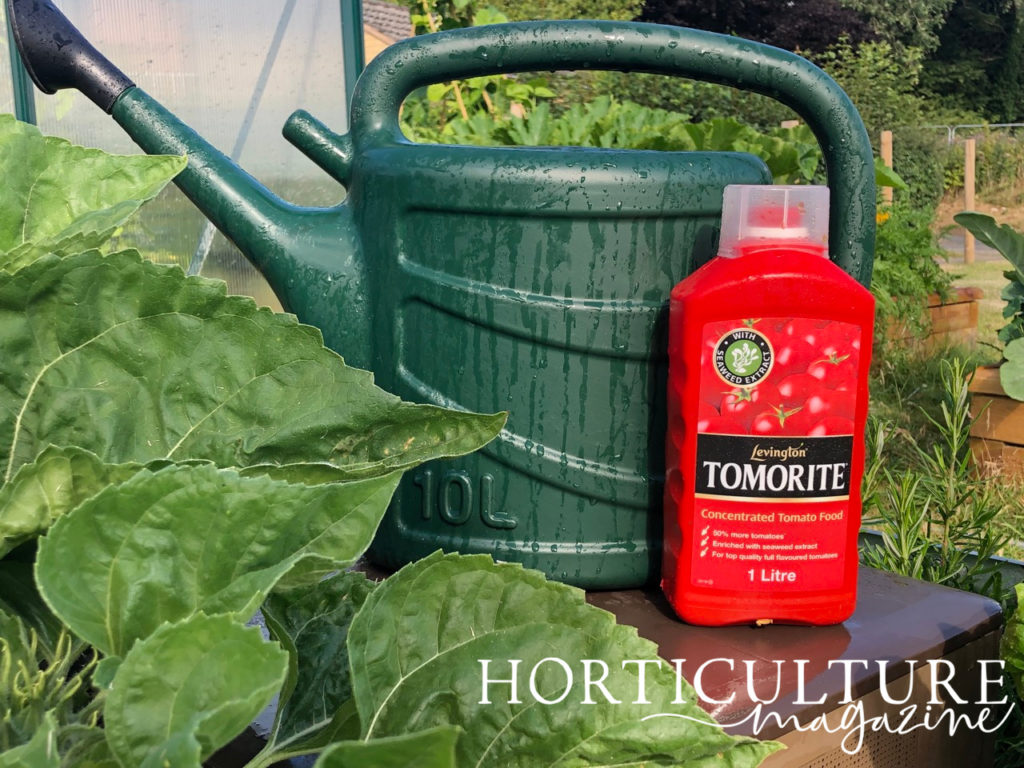
“Aubergines are best grown under glass but can also be grown in a warm, sunny and sheltered spot outside if the soil has been warmed beforehand and the plants fleeced for a short period after planting out,” shares Roy Nicol, a Master Horticulturist.
You might be wondering how you can help feed aubergine as it grows.
In this guide, we’ll share everything you need to know about watering and fertilising your aubergine plants so they can stay happy and healthy whilst growing in your garden.
Watering
Aubergines should be grown in free-draining soil that is kept moist but not soggy.
These plants need regular watering and may require daily watering in hot weather.
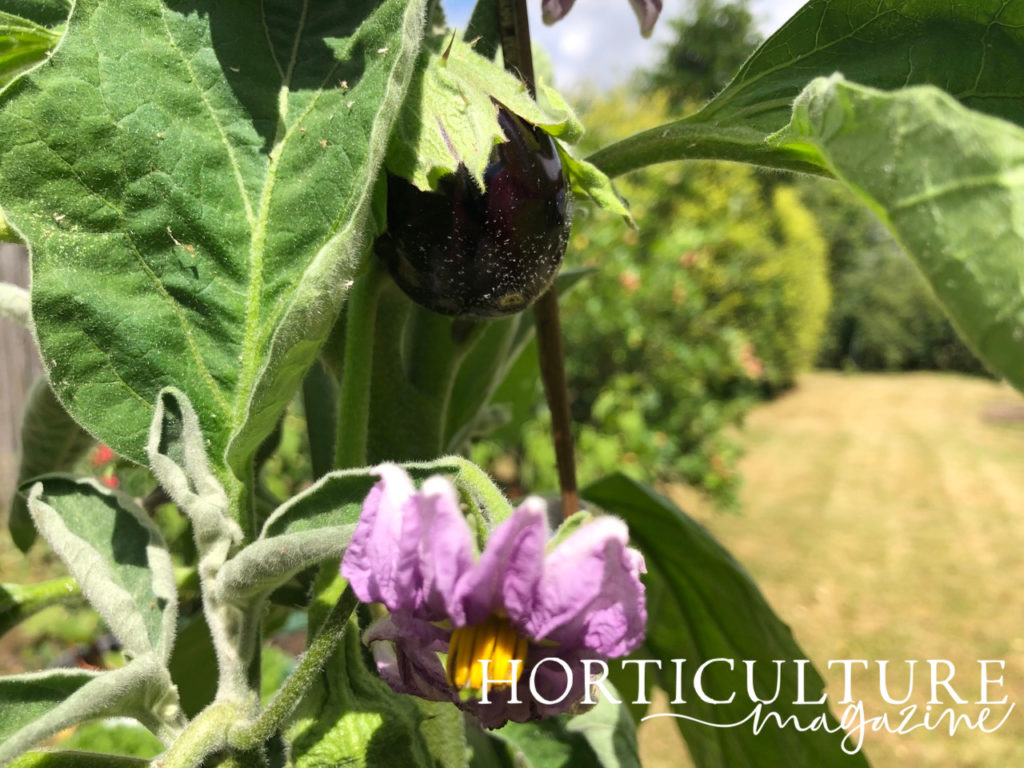
The soil should be made moist down to about 15cm.
Before watering, it would be advisable to check the soil down to a depth of 3-4cm to determine if it is dry or moist.
If you observe the leaves curling or the plant wilting during warm weather, that’s probably a sign that the soil is insufficiently moist.
Instead of the usual and customary cold water, use tepid water for these warm-weather plants that have no resistance to the cold.
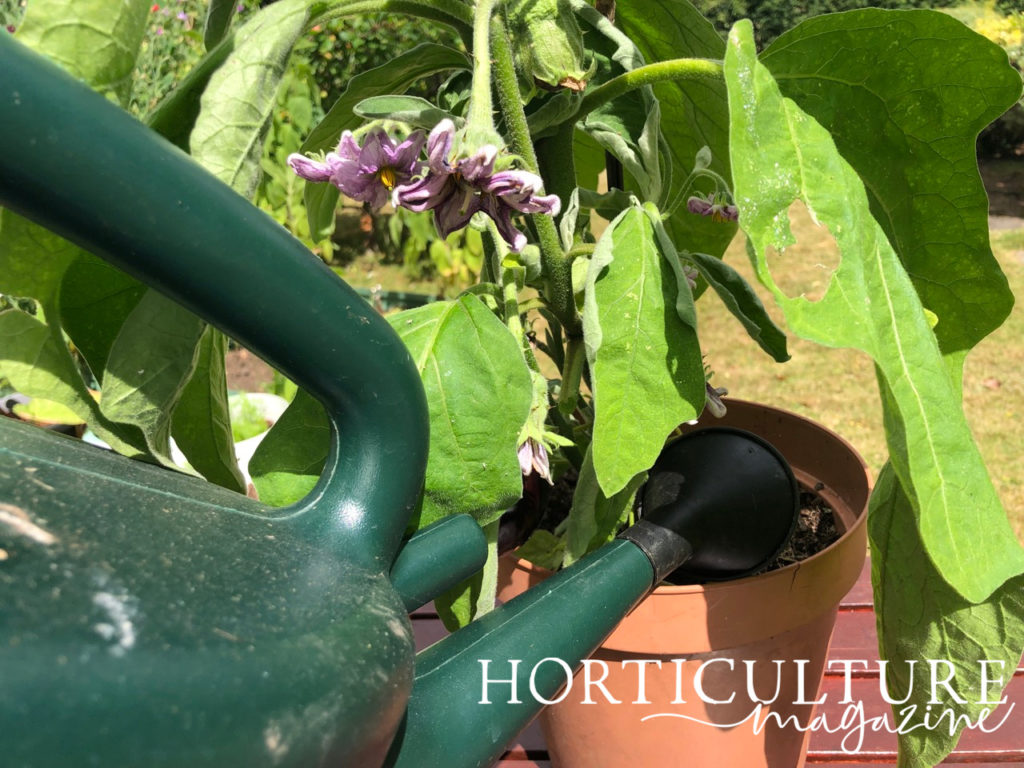
Another departure from the norm is in wetting the foliage, as these plants would enjoy a daily spray of tepid water on their leaves.
This will deter pests, particularly red spider mites, to which the plant is susceptible.
Feeding
Feeding is key to growing plump and rich aubergines and the best start is to grow them in rich, fertile soil.
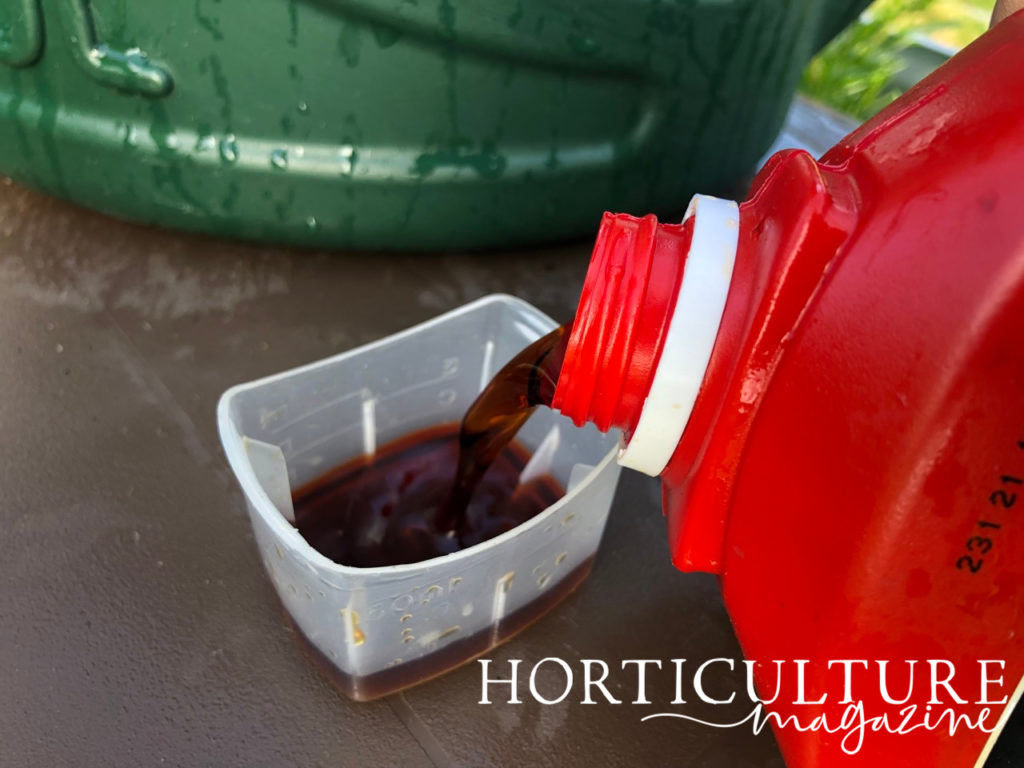
When sowing seeds, use a low-nutrient or seed-sowing compost and when transplanting young plants, use a multi-purpose compost and a balanced fertiliser to grow them on.
When planted in their final positions, start to feed with a high-potash fertiliser as soon as you see vegetables beginning to form.
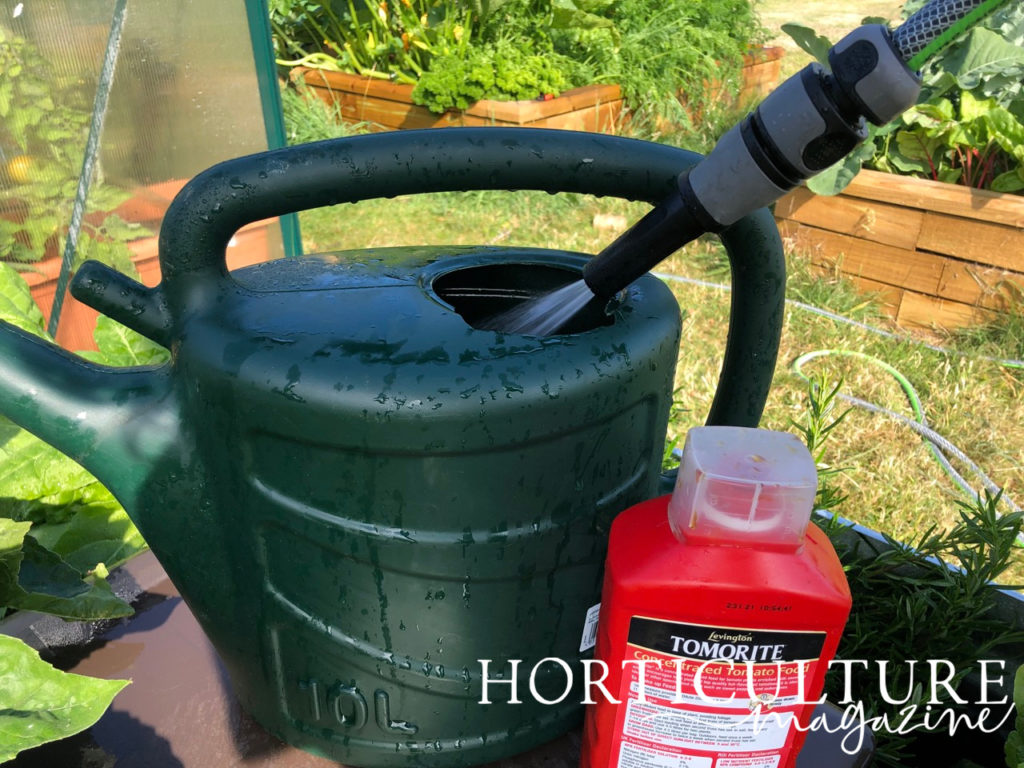
For an easier application, you could use a liquid formula.
Feed Aubergine plants with this fertiliser once every 2 weeks by pouring it onto the soil to encourage fruit formation and pick the fruits when they are a bright, glossy and deep purple or black colour.
References
- 1Solanum melongena. (n.d.). North Carolina Extension Gardener Plant Toolbox. Retrieved April 25, 2023, from https://plants.ces.ncsu.edu/plants/solanum-melongena/#:~:text=This%20species%20is%20native%20to,eggplant%20is%20considered%20an%20annual
- 2Why Is It Called an Eggplant? (2019, August 20). Wonderopolis. Retrieved March 10, 2023, from https://www.wonderopolis.org/wonder/why-is-it-called-an-eggplant

